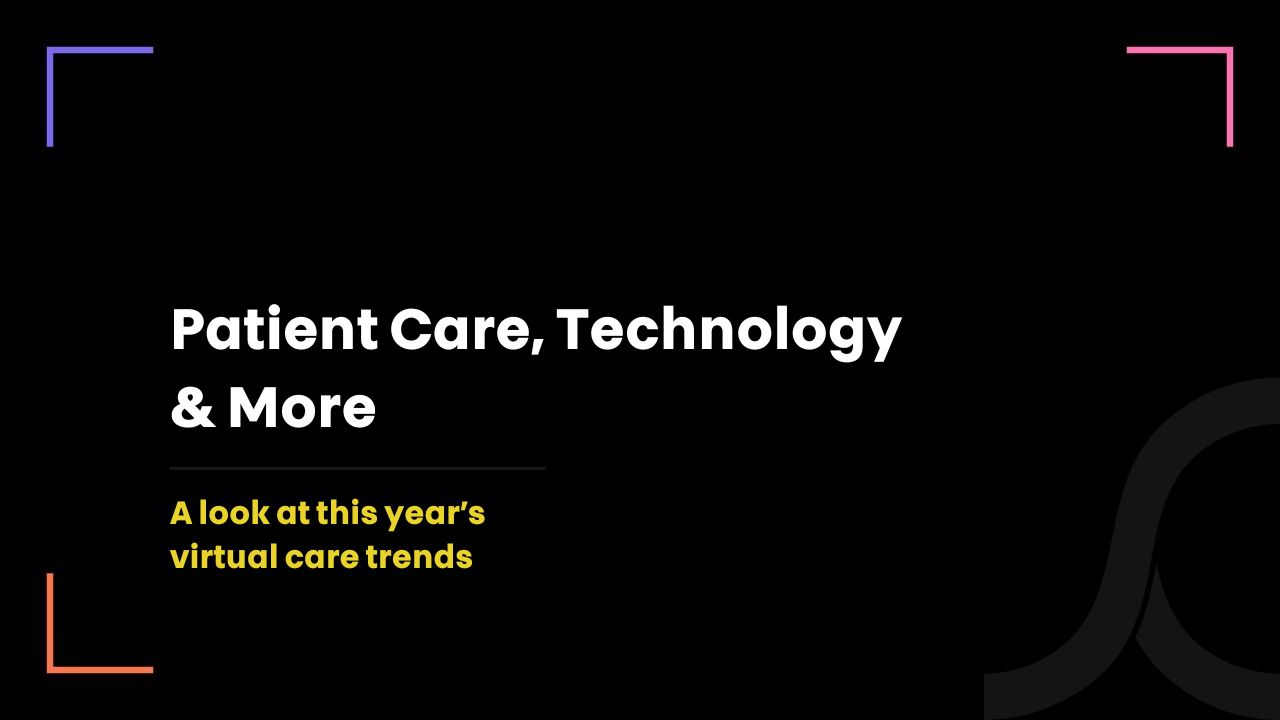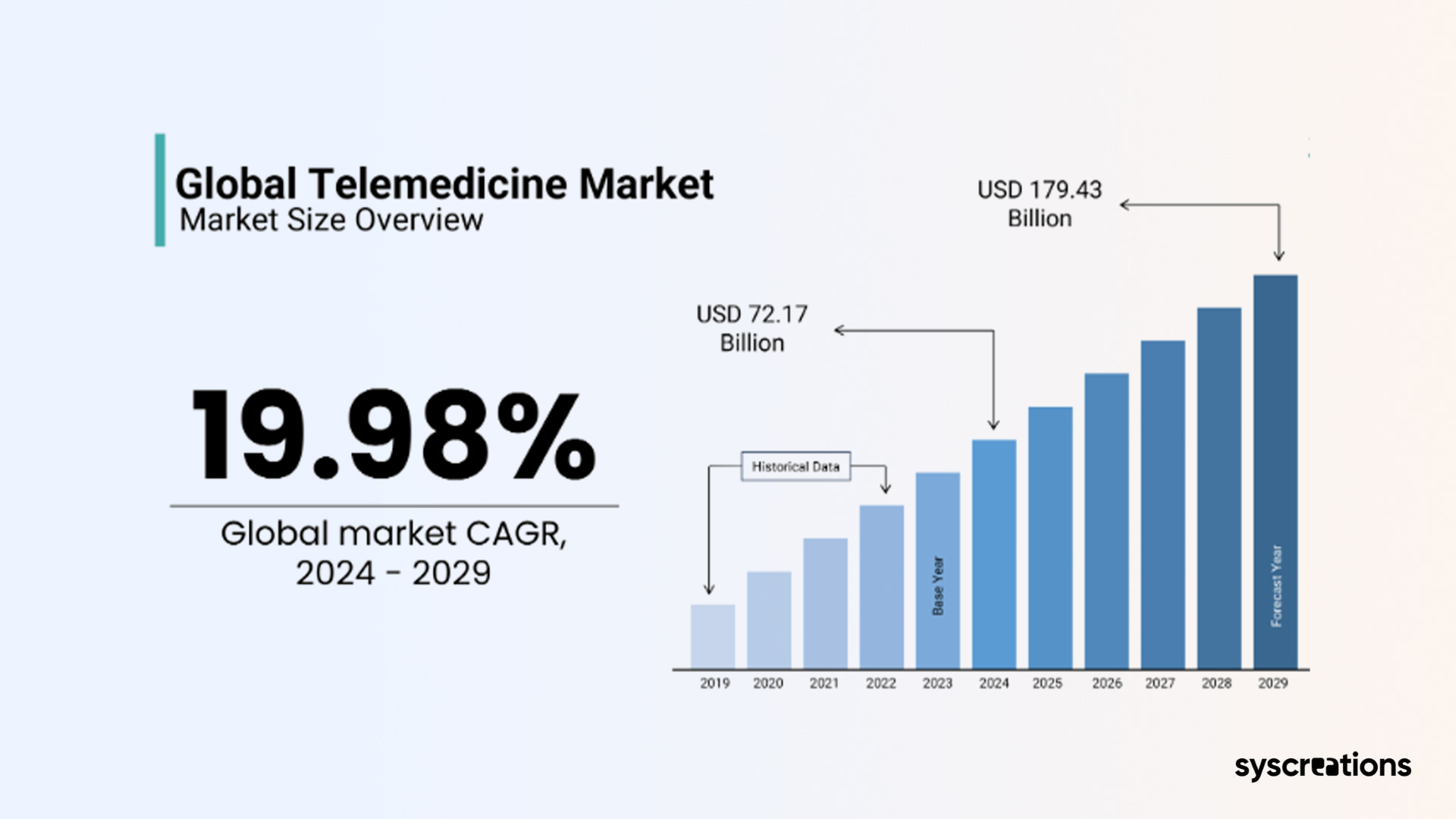Telemedicine Apps vs. In-Person Visits: Patient Preferences in 2024

9 months ago
Many clinicians and people used to believe that medical care was best delivered in person.
However, the pandemic has led to a widespread shift to virtual care.
In April 2020, the number of virtual visits had increased by 78 times over the previous two months, accounting for approximately one-third of outpatient visits.
In May 2021, 88 percent of consumers reported using telehealth services at some point since the COVID-19 epidemic started.
Physicians were also far more comfortable with virtual care.
Telemedicine After Covid-19
The COVID-19 outbreak has forced many people to stay at home without the chance to see a doctor.
It served as a catalyst for extensive telemedicine integration, propelling telemedicine trends forward at an unprecedented rate.
In many ways, the COVID-19 pandemic has proved how powerful and helpful telemedicine's future potential is.
Patient–physician relationships are shifting
Telemedicine Market
The worldwide telemedicine market was valued at USD 60.15 billion in 2023.
The global telemedicine industry is expected to be worth USD 72.17 billion in 2024 and $179.43 billion by 2029.
The worldwide telemedicine industry is estimated to exhibit a robust CAGR of 19.98% between 2024 and 2029.

Reason Behind The Rise of Telemedicine
1. Convenience and Accessibility
Patients today are increasingly turning to telemedicine apps for several key reasons. One of the main draws is the convenience they offer.
Whether it's for regular check-ups, managing ongoing health conditions, or seeking specialized medical advice, telemedicine eliminates the need to travel long distances and endure lengthy waits at clinics.
This not only saves time but also reduces the stress of navigating through traffic or waiting rooms.
2. Cost-Effectiveness
Cost-effectiveness is another significant factor.
By opting for telemedicine, patients can potentially save money that would otherwise be spent on transportation or childcare for in-person visits.
Some telemedicine services also offer competitive pricing for consultations, making healthcare more affordable and accessible to a wider range of people.
3. Preference for Remote Care
In 2024, there's a noticeable trend towards preferring remote care options provided by telemedicine apps.
Beyond convenience and cost savings, this shift represents a move towards healthcare that revolves more around the patient's needs.
Patients appreciate being able to receive prompt care without being limited by geographical barriers, which is particularly beneficial for those in rural or underserved areas.
4. Enhanced Patient Experience
Telemedicine apps also enhance the overall patient experience by encouraging ongoing engagement and personalized care.
Features like secure messaging, virtual visits, and remote monitoring empower patients to actively manage their health.
This accessibility helps to build stronger relationships between patients and healthcare providers based on trust and convenience, ultimately leading to better health outcomes.
What Patients Are Preferring?
A balancing act!
While telemedicine has gained popularity, it's essential to recognize that patient preferences vary based on factors such as:
1. Type of medical condition
Acute illnesses often require in-person examinations, while chronic disease management can be effectively handled through telemedicine.
2. Patient demographics
Age, tech-savviness, and comfort level with technology influence preferences.
3. Severity of illness
Serious conditions may necessitate in-person consultations for comprehensive assessments and treatments.
The Future of Telemedicine: A Hybrid Model
To cater to diverse patient preferences, a hybrid model that seamlessly integrates telemedicine and in-person visits is gaining traction.
In healthcare, hybrid care models blend virtual and in-person interactions throughout the entire treatment cycle.
As patients progress through medical care pathways, in-person elements — surgeries, labs, imaging, vaccines — can be easily integrated with virtual ones, such as remote monitoring or a telehealth visit with a specialist from home.
Physical encounters are important, but hybrid care combines the real and digital to create a seamless experience for both clinicians and patients.
Technological Advancements In Telemedicine
Many medical institutions have already adopted telehealth and telemedicine trends.
Improved video conferencing platforms, enhanced security measures for patient data protection, and the incorporation of artificial intelligence for diagnoses and triage are just a few instances of how technology has grown to meet the needs of telehealth.
As technology advances, telemedicine is likely to incorporate ever more inventive solutions, improving the quality of care provided remotely.
Want to Develop a Telemedicine App for Practice? 2 Best Options
If you've decided to be a part of the next generation of healthcare practice and want to develop your telemedicine or telehealth app, you have two major options.
- White-label App
- Custom App
These options depend on your specific requirements and the size of your organization.
If You’re Running a Small-size Clinic
Small clinics looking to step into the future of healthcare with telemedicine or telehealth apps often face significant challenges.
High costs and long development times for custom solutions can be prohibitive. However, white-label apps offer an ideal alternative. Here’s why:
Cost-Effective Solution
No Recurring Fees: Unlike SaaS apps, white-label solutions don't come with monthly or yearly subscription fees.
Lower Upfront Investment: Compared to custom apps, which can cost over $100,000, white-label apps are significantly more affordable, costing 70-80% less.
Flexible and Customizable
Built-In Features: White-label apps come pre-built with common features and best practices, designed to meet general needs effectively.
Custom Modifications: Developers can easily tailor the app to fit your clinic's specific requirements, ensuring it serves your unique operational needs.
Quick Deployment
Ready-to-Use: The core of the app is already developed, so you don’t start from scratch.
Fast Setup: Customization and branding can be completed quickly, allowing you to launch your telemedicine platform within days.
Branding and Ownership
Professional Appearance: Your clinic’s branding can be seamlessly integrated into the app, giving it a professional look and feel.
Source Code Option: If owning the source code is important, many white-label solutions offer this for an additional fee, giving you greater control and flexibility.
You can also look at the real images of our white-label telemedicine app that we built for previous clients.

If You’re Running A Large Hospital
Large hospitals have complex procedures and workflows, making it ideal to develop a custom app.
A custom solution can be precisely tailored to meet specific requirements and can easily scale as the hospital grows.
Tailored to Your Needs
Perfect Alignment: Custom apps are designed to match your hospital's specific processes and workflows, ensuring a seamless fit.
Specialized Features: You can incorporate features unique to your operations, enhancing efficiency and patient care.
Scalability and Flexibility
Future Growth: Custom apps are built with scalability in mind, allowing your hospital to expand and adapt the app as your needs evolve.
Adaptability: The app can be modified and updated to integrate new technologies and address emerging challenges.
Enhanced Integration
System Compatibility: Custom apps can be designed to integrate smoothly with your existing systems, such as EHRs, billing, and scheduling software.
Workflow Automation: Automate complex processes to reduce manual work and minimize errors.
Improved Data Management
Secure Solutions: Custom apps can include advanced security measures tailored to protect sensitive patient data, ensuring compliance with regulations.
Data Accessibility: Facilitate better data access and management, leading to improved decision-making and patient outcomes.
Here's a look at the architecture of our custom, feature-rich telemedicine app.


Features We Offer in Our Telemedicine App

What USPs We Hold While Developing A Telemedicine App
We're a dedicated healthcare IT company with over 10 years of experience focusing exclusively on healthcare projects.
Having developed telemedicine solutions for more than 250 clients of various sizes, we at SyS Creations identified key characteristics that drive successful telemedicine.
- Unique UI, features, and workflow tailored for ease of use by healthcare providers and patients.
- Rapid app development with guaranteed delivery within specified timelines.
- Comprehensive technology and healthcare compliance consulting services included.
- Expert Robotic Process Automation (RPA) engineers for reducing errors and enhancing productivity in telemedicine operations.
Our expertise ensures that our solutions save you both time and money.
The future belongs to those who adapt, and telemedicine is a key step toward modernizing healthcare.
By integrating it, you can transform your practice and make healthcare more accessible to everyone.
So, we would love to hear your thoughts on this blog and we would like to discuss your ideas on telemedicine, apps, compliance, and latest healthcare technologies.

